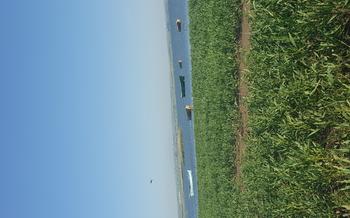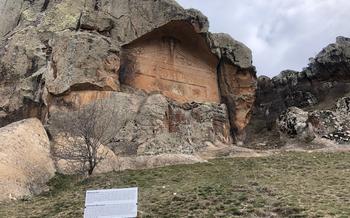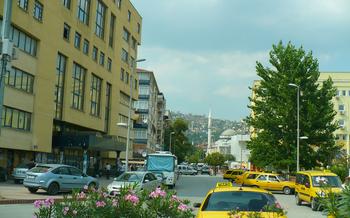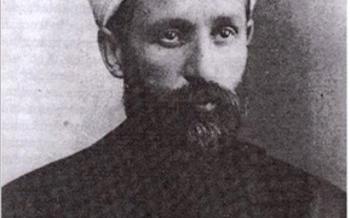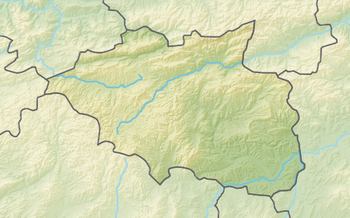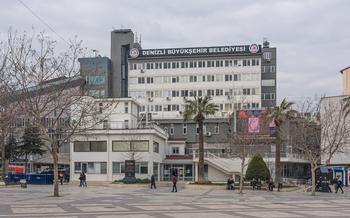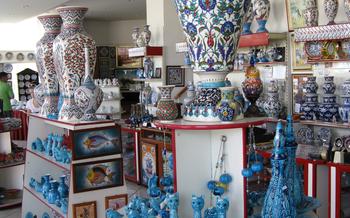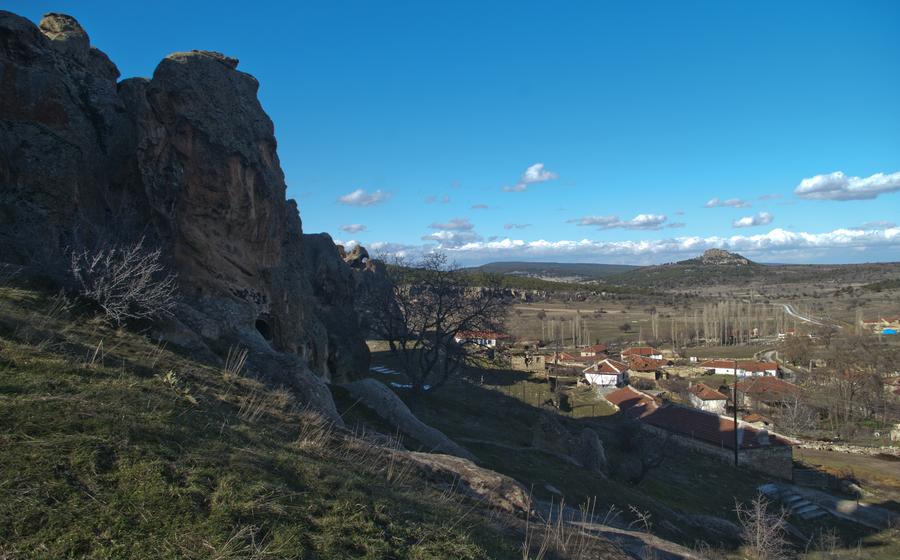
Yazılıkaya Midas City
- The Antiquity of Yazılıkaya Midas City
- Location and Accessibility
- Exploring the City Ruins
- Rock-Cut Reliefs and Inscriptions
- The Royal Tombs: Majestic Burial Chambers of Phrygian Kings
- Location and Structure
- Impressive Facade and Entrance
- Burials and Funerary Practices
- Artifacts and Treasures
- Significance of the Tombs
- The Acropolis and City Walls
- The Lower City and Residential Areas
- The Museum of Yazılıkaya
- Local Cuisine and Flavors
- Cultural and Historical Significance
- Shopping for Souvenirs
- Accommodation and Lodging Options
- Planning Your Visit to Yazılıkaya Midas City
- Ideal Time to Visit
- Recommended Duration
- Opening Hours and Fees
- Packing Essentials
- Practical Travel Tips
- Photography and Capturing Memories
- Insider Tip: Unveiling the Hidden Treasures
The Antiquity of Yazılıkaya Midas City
Yazılıkaya Midas City, an ancient Phrygian settlement, holds significant historical value as a testament to the Phrygian civilization, which flourished in central Anatolia during the 8th to 7th centuries BC. The city was named after King Midas, a legendary figure known for his "golden touch," who ruled during this period. Yazılıkaya Midas City offers a glimpse into the lives and culture of the Phrygians, shedding light on their religious beliefs, artistic expressions, and urban planning skills. Archaeological excavations have unearthed impressive ruins, including the Temple of Cybele, rock-cut reliefs and inscriptions, royal tombs, and a bustling lower city, providing valuable insights into the grandeur and complexity of this ancient Phrygian metropolis.
Location and Accessibility
Yazılıkaya Midas City is situated in Eskişehir, a vibrant city in northwestern Turkey. Located approximately 10 kilometers from the city center, Yazılıkaya Midas City is easily accessible by various means of transportation. For those driving, the city is well-connected by a network of roads and highways, making it a convenient destination for road trippers. Alternatively, visitors can take a scenic train ride from Eskişehir to the nearby town of Yazılıkaya, followed by a short taxi or bus ride to the ancient city. The city's proximity to major cities like Ankara, Istanbul, and Bursa makes it an ideal day trip or weekend getaway for history and culture enthusiasts. Maps and directions are readily available online or through local tourist information centers to assist travelers in navigating their way to Yazılıkaya Midas City.
Exploring the City Ruins
Yazılıkaya Midas City offers a fascinating journey through the remnants of an ancient Phrygian settlement. Its well-preserved ruins provide a glimpse into the urban planning, architecture, and daily life of this once-thriving city.
The layout of the city can be roughly divided into two main sections: the acropolis and the lower city. The acropolis, situated on the highest point of the hill, was the fortified citadel where the ruling elite resided. The lower city, which extended below the acropolis, was home to the general population and the bustling center of economic and social activities.
Among the notable ruins within the city are the Temple of Cybele, a sacred site dedicated to the Phrygian mother goddess; the Royal Tombs, where the Phrygian kings and their families were buried; and various other religious and administrative structures. These buildings showcase the architectural prowess of the Phrygians and provide valuable insights into their religious beliefs and practices.
Rock-Cut Reliefs and Inscriptions
Among the most distinctive features of Yazılıkaya Midas City are its intricate rock-cut reliefs and inscriptions. These impressive artworks, carved directly into the rock faces, offer a glimpse into the artistic prowess and cultural beliefs of the Phrygians.
The reliefs depict a variety of figures, including gods, goddesses, priests, and animals, all rendered in a distinctive style that combines realism with symbolic elements. The most prominent figure is Cybele, the Great Mother Goddess, who is often depicted seated on a throne flanked by lions. Other notable reliefs include depictions of King Midas, the legendary ruler with the golden touch, and various mythological scenes.
The inscriptions, written in the Phrygian language, provide valuable insights into the history, religion, and culture of the Phrygians. They record royal decrees, religious rituals, and other important events, shedding light on the daily lives and beliefs of this ancient civilization.
The combination of reliefs and inscriptions at Yazılıkaya Midas City creates a unique and immersive experience for visitors, allowing them to connect with the past and gain a deeper understanding of Phrygian art and culture.
The Royal Tombs: Majestic Burial Chambers of Phrygian Kings
Nestled within the ancient city of Yazılıkaya Midas City, the royal tombs stand as impressive testaments to the grandeur and power of the Phrygian kings. These elaborate burial chambers, carved into the rocky slopes, offer a glimpse into the funerary practices and beliefs of this ancient civilization.
Location and Structure
The royal tombs are situated on the eastern side of the city, overlooking the sprawling landscape. Each tomb consists of a monumental facade adorned with intricate carvings and inscriptions, leading to a spacious burial chamber. The facades showcase a remarkable blend of Phrygian and Hellenistic architectural styles, reflecting the cultural influences that shaped the city.
Impressive Facade and Entrance
The facades of the tombs are a sight to behold, featuring elaborate carvings that depict scenes from Phrygian mythology and the lives of the deceased kings. Lions, bulls, and other symbolic figures guard the entrances, symbolizing strength and protection. The inscriptions, written in the Phrygian language, provide valuable insights into the names, titles, and accomplishments of the buried kings.
Burials and Funerary Practices
The burial chambers within the tombs are spacious and adorned with frescoes and reliefs depicting scenes of banquets, hunting expeditions, and religious ceremonies. These decorations reflect the belief in an afterlife, where the deceased kings would continue to enjoy the pleasures and luxuries they had in life.
Artifacts and Treasures
Excavations of the royal tombs have yielded a wealth of artifacts, including gold jewelry, bronze vessels, and finely crafted pottery. These treasures provide valuable insights into the craftsmanship and artistic skills of the Phrygians. Some of the most notable discoveries include the golden crown of King Midas, intricate gold earrings, and elaborate jewelry sets.
Significance of the Tombs
The royal tombs of Yazılıkaya Midas City offer a unique glimpse into the funerary practices and beliefs of the Phrygian civilization. They showcase the importance of kingship, the belief in an afterlife, and the cultural influences that shaped this ancient society. Exploring these tombs is a journey through time, allowing visitors to connect with the past and gain a deeper understanding of Phrygian history and culture.
The Acropolis and City Walls
Standing tall at the highest point of Yazılıkaya Midas City, the acropolis served as the fortified citadel, the heart of the city's defense system. As you approach the acropolis, the imposing walls and towers that once protected the city will captivate your attention. These massive structures, built with precision and strength, showcase the architectural prowess of the Phrygians.
Explore the well-preserved defensive walls, marveling at the intricate stonework and the strategic placement of towers. Imagine the fierce battles that took place here, as the city's inhabitants valiantly defended their homes and way of life.
Ascend to the summit of the acropolis and be rewarded with breathtaking panoramic views of the surrounding landscape. From this vantage point, you can admire the vast expanse of the ancient city, the rolling hills, and the distant mountains. It's a moment to soak in the grandeur and significance of Yazılıkaya Midas City, a testament to the ingenuity and resilience of the Phrygian civilization.
The Lower City and Residential Areas
The lower city of Yazılıkaya Midas City was a bustling hub of activity during its time. It served as the commercial and residential center of the ancient city, where people lived, worked, and traded. The streets were lined with houses, shops, and workshops, creating a vibrant and lively atmosphere.
One of the most notable features of the lower city is the presence of a large marketplace. Here, merchants from all over the region gathered to buy and sell goods, including agricultural products, textiles, and pottery. The marketplace was a center of commerce and played a vital role in the city's economy.
In addition to the marketplace, the lower city was also home to various public buildings and institutions. These included a theater, a gymnasium, and a bathhouse, which served as gathering places for the city's residents. The theater was particularly impressive, with its well-preserved stage and seating area, suggesting that the city had a thriving cultural scene.
The lower city's residential areas provide a glimpse into the daily lives of the people who lived in Yazılıkaya Midas City. The houses were typically small and made of mud-brick, with courtyards and gardens. Archaeologists have discovered evidence of hearths, ovens, and storage areas, suggesting that the inhabitants cooked, baked, and stored food within their homes.
Exploring the lower city of Yazılıkaya Midas City offers a fascinating glimpse into the urban life of the Phrygians. Visitors can wander through the streets, imagining the hustle and bustle of the ancient marketplace, or sit in the theater, envisioning the performances that once took place there. The lower city is a testament to the vibrant and sophisticated society that existed in Yazılıkaya Midas City centuries ago.
The Museum of Yazılıkaya
Enrich your understanding of Yazılıkaya Midas City's captivating history and culture at its dedicated museum. Step into a treasure trove of artifacts meticulously excavated from the ancient ruins, each piece narrating a chapter in the city's glorious past. Gaze upon intricate sculptures that once adorned temples and palaces, marvel at the delicate pottery that graced Phrygian tables, and decipher the secrets etched into ancient inscriptions.
Interactive exhibits and immersive multimedia presentations bring the museum to life, transporting you back in time to witness the grandeur of this once-thriving metropolis. Explore the daily lives of its inhabitants, their beliefs, and their artistic expressions. The museum not only preserves the legacy of Yazılıkaya Midas City but also serves as a gateway to understanding the broader tapestry of Anatolian history.
Local Cuisine and Flavors
Immerse your taste buds in the delectable flavors of Eskişehir's cuisine, a harmonious blend of traditional Turkish dishes and local ingredients. Tantalize your palate with the famous "çiğ börek," crispy pastries filled with a savory mixture of herbs, cheese, and minced meat. Indulge in the succulent "mantı," tender dumplings topped with a tangy garlic yogurt sauce.
Explore the charming restaurants and cafes nestled amidst the vibrant streets of Eskişehir, each offering a unique culinary experience. Discover hidden gems where locals gather to savor authentic dishes passed down through generations. Ask your hotel concierge or fellow travelers for recommendations on the best places to satisfy your cravings. Embrace the opportunity to engage with the friendly locals and learn about their culinary traditions.
As you savor the delicious offerings of Eskişehir, remember to respect local customs and etiquette. Be mindful of dining norms, such as using your right hand to eat and avoiding loud noises. Embrace the Turkish tradition of hospitality and enjoy the warmth and generosity of the local people.
Cultural and Historical Significance
Yazılıkaya Midas City holds immense cultural and historical significance as a testament to the Phrygian civilization, a prominent kingdom that flourished in ancient Anatolia. The city played a pivotal role in the development of Phrygian culture, art, and architecture, contributing to the rich tapestry of Anatolian history. Its well-preserved ruins provide valuable insights into the Phrygians' way of life, religious beliefs, and artistic expressions.
The city's legacy extends beyond its physical remains, influencing later cultures and civilizations in the region. Its rock-cut reliefs and inscriptions have been studied extensively, shedding light on Phrygian mythology, symbolism, and their connection to the broader Anatolian cultural context. Yazılıkaya Midas City stands as a symbol of the Phrygians' ingenuity, creativity, and their significant contributions to the cultural heritage of Turkey.
Preserving and protecting this ancient site is of utmost importance to safeguard its historical and cultural value for future generations. Ongoing archaeological research and conservation efforts aim to restore and maintain the ruins, ensuring their integrity and accessibility for visitors and scholars alike.
Shopping for Souvenirs
As you wander through Eskişehir, take the opportunity to browse the local markets and shops for unique souvenirs that reflect the city's rich history and culture. From traditional Turkish handicrafts to Phrygian-inspired art, there's a treasure trove of items to discover.
Look for intricate pottery, handwoven textiles, and delicate jewelry that showcase the artistry of local artisans. These souvenirs not only serve as mementos of your trip but also support the preservation of traditional crafts and cultural heritage.
When shopping, don't be afraid to engage in friendly bargaining with the shopkeepers. It's a common practice in Turkey and a way to experience the local culture. Be respectful and patient, and you'll likely find yourself with unique souvenirs at a great price.
By purchasing souvenirs from local artisans, you're not only taking home a piece of Yazılıkaya Midas City but also contributing to the livelihood of the community. It's a meaningful way to connect with the culture and support its preservation for future generations.
Accommodation and Lodging Options
When planning your trip to Yazılıkaya Midas City, finding suitable accommodation is essential for a comfortable and enjoyable stay. Fortunately, several options are available to cater to different preferences and budgets.
-
Nearby Hotels and Guesthouses: Within close proximity to the city ruins, you'll find a range of hotels and guesthouses offering a variety of amenities. Look for establishments that provide clean and comfortable rooms, friendly service, and convenient access to the historical site.
-
Amenities and Facilities: Consider the amenities and facilities important to you when choosing accommodation. Some hotels offer amenities like swimming pools, fitness centers, and restaurants, while guesthouses may provide more intimate settings and personalized service.
-
Booking Accommodations: To secure your preferred accommodation, it's advisable to book in advance, especially during the peak tourist season. Online booking platforms and travel agents can assist you in finding the best rates and availability.
-
Experiencing Turkish Hospitality: Turkish hospitality is renowned worldwide, and you can expect a warm welcome and excellent service at your chosen accommodation. Enjoy the opportunity to interact with locals and learn about their culture and traditions.
Planning Your Visit to Yazılıkaya Midas City
Ideal Time to Visit
To experience the wonders of Yazılıkaya Midas City at their best, plan your visit during the spring (April-May) or autumn (September-October) months. The weather during these seasons is pleasant, with warm and sunny days, making it ideal for outdoor exploration. Avoid visiting during the scorching summer months (June-August) when temperatures can soar, making the exploration of the ruins less enjoyable.
Recommended Duration
To fully explore the city ruins and immerse yourself in its ancient history, allocate at least half a day to your visit. This will give you ample time to wander through the ruins, marvel at the rock-cut reliefs, visit the museum, and soak up the atmosphere of this once-thriving metropolis.
Opening Hours and Fees
The Yazılıkaya Midas City is open to visitors daily from 8 am to 5 pm. The entrance fee is quite affordable, allowing you to access the ruins and the museum. Guided tours are available for those who prefer a more in-depth exploration with expert commentary.
Packing Essentials
When packing for your visit to Yazılıkaya Midas City, remember to bring comfortable walking shoes, as you'll be doing quite a bit of exploring on uneven terrain. Don't forget your camera to capture the stunning ruins and the surrounding landscapes. Sunscreen, a hat, and sunglasses are essential to protect yourself from the sun.
Practical Travel Tips
To make the most of your visit, consider hiring a local guide who can provide valuable insights into the history and significance of the city. If you're driving, ample parking is available near the site. Alternatively, you can take a taxi or public transportation from Eskişehir city center.
Photography and Capturing Memories
As you wander through the ancient ruins of Yazılıkaya Midas City, don't forget to capture the beauty and grandeur of your experience through photography. The city offers a wealth of photo opportunities, from the intricate rock-cut reliefs to the sweeping views of the surrounding landscape.
For the best results, plan your visit during the golden hours of sunrise or sunset, when the soft light casts a warm glow on the ruins. Use a wide-angle lens to capture the scale of the city, and experiment with different angles to create unique perspectives.
Remember to be respectful of the site and other visitors when taking photos. Follow the rules and regulations regarding photography, and avoid using flash or tripods that may disrupt others' enjoyment.
Share your stunning captures on social media using relevant hashtags to connect with other travelers and history enthusiasts. Your photos will not only serve as beautiful mementos of your journey but also help promote and preserve this remarkable historical site.
Insider Tip: Unveiling the Hidden Treasures
As you explore Yazılıkaya Midas City, venture beyond the main attractions to discover hidden gems that often go unnoticed. Explore the lesser-known corners of the ruins, where you might stumble upon ancient structures, intricate carvings, or serene spots offering breathtaking views.
For a truly unique experience, visit the city during off-peak hours or on weekdays to avoid the crowds and immerse yourself in its tranquility. This will allow you to wander at your own pace, savor the ambiance, and capture stunning photographs without distractions.
To fully appreciate the site, consider hiring a local guide who can share captivating stories and insights about the history, culture, and significance of Yazılıkaya Midas City. They can lead you to hidden spots, explain the symbolism behind the reliefs and inscriptions, and bring the ancient city to life.
Remember to be respectful of the site and its surroundings. Follow designated paths, refrain from touching or climbing on the ruins, and dispose of waste responsibly. By preserving and protecting this historical treasure, we ensure that future generations can continue to marvel at its wonders.
